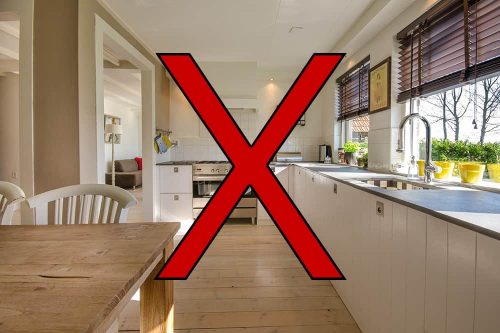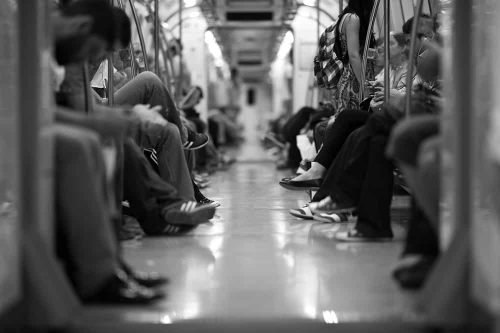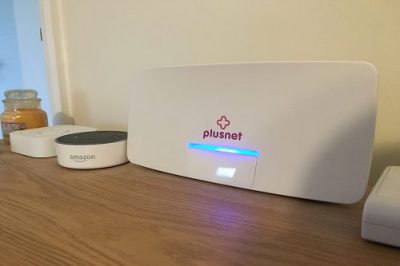Affiliate Disclosure: As an Amazon Associate I earn from qualifying purchases.
When designing your home network, or maybe even moving home, you may be wondering where the best place for your router is to get the best performance possible.
Here are 8 tips to help you decide the best place for your router:
- Pick a central location
- Set it up high
- Avoid the kitchen
- Consider the walls
- Avoid obstructions
- Position the antennas optimally
- Avoid crowded areas
- Consider other routers
Wired vs Wireless
Before going over some tips for the best placement of a router, it is worth thinking about whether you will be using a wired or wireless connection for your devices.
Ideally, you would go for a wired solution, but for some, this isn’t always practical and it can work out to be quite a time consuming and expensive task.
The benefit to going wired is that the placement of your router doesn’t matter as much; you will get pretty much the same performance whether the signal has to travel down a 10ft cable or a 30ft cable.
Whereas with a wireless setup, the wireless signal given out by the router will have a limited range and degradation can be caused by interference, distance, and obstructions.
For the purpose of this article, we’ll assume you will be connecting your devices to the router wirelessly and therefore need to take more consideration in regards to where the router will be located.
You may also like: 7 Best Wireless Routers for Lots of Devices: Buyer’s Guide
1. Pick a Central Location
Start in a central location when thinking about where to place your router.
In most homes this will be the living room or dining room; the hubs for many family homes.
Wi-Fi signal gets dispersed outwards at 360 degrees, but it isn’t really practical to keep your router in the very center point of the most central room in your home.
You want to avoid placing the router around the perimeter of your home as the external walls can block the movement of a Wi-Fi signal.
My recommendation would be to decide on the central room you wish to keep the router in and then determine the center-most wall within the room.
This will allow the router to be kept against a wall and out of the way, whilst hopefully still being able to disperse an even signal to each corner of your home.
2. Set It up High
Wi-Fi signals are essentially radio waves, which travel up and down as well as out.
Therefore, it is best to place the router as high up as you can, perhaps on top of a shelf or a bookcase.
Although not as necessary if you have a single-story home, you may find you receive a better signal in your upstairs rooms when placing the router higher up on the ground floor.
If you have a three-story home, you may want to look at placing the router on the middle floor to help cater to all three stories.
3. Avoid the Kitchen
Regardless of whether it is the most central room in your home, avoid placing your router in the kitchen.
Kitchens will typically be home to many metal objects such as pots, pans, and electrical devices.
Metal is known to disrupt radio waves; as you now know, Wi-Fi signals are essentially radio waves.
Another reason to avoid the kitchen is down to one single appliance that most, if not all, homes will have: a microwave.
Not only are microwaves made of metal, but they also operate on the same 2.4 GHz frequency as your wireless router.
You may not know this, but your Wi-Fi signal can get interfered with when the microwave is operation. The tiny amount of radiation that escapes can also have an effect on the signal.
The last thing you want is your favorite Netflix show to start buffering as soon as you go to heat up something in the microwave!
Related article: What Is the Difference Between 2.4 GHz and 5 GHz Wi-Fi?

4. Consider the Walls
Radio waves, and therefore a Wi-Fi signal, often have trouble traveling through walls that are made from a thick material such as brick, concrete or stone.
Many modern homes are made using wood, even the external walls, with just a small amount of drywall on the inside.
If you have a home that is built this way, the walls having an effect on your Wi-Fi signal shouldn’t be much of a concern.
If you have a home that is made of thick, solid concrete walls, however, you should definitely consider the placement of your router in regard to the positioning of these walls.
5. Avoid Obstructions
Consider the router’s immediate surroundings once you have decided on where you wish to place it.
Metal objects, water, and even mirrors can all affect a Wi-Fi signal, so try and position anything made using these materials as far away from the router as practical.
6. Antenna Position Matters
Although it may not make as large a difference as some of the other tips in this article, it is still definitely worth considering the position of the antennas on your router, especially if you have a multi-story home.
Positioning the antenna upwards will help the Wi-Fi signal reach further laterally, whereas placing it sideways will help provide a better signal upstairs.
If your router has two antennae, get the best of both worlds and position one to point upwards and the other to place sideways.
Considering how simple it is to simply rotate the antenna, it is always worth doing regardless of whether it makes much of a difference to your signal.
7. Avoid Crowded Areas
This may be difficult if the most central room in your home is the living room, dining room or family room, but try and avoid placing your router in any area where many people tend to gather.
The reason for this is that water can inhibit Wi-Fi signals.
Given that humans consist of mostly water, a large crowd gathered in the same room as the router can interfere with the signal.
Even out in public, you may have noticed that the Wi-Fi signal starts to diminish when a large crowd gathers; this may not necessarily be down to everyone connecting their devices to the connection as what you are currently using, but because of the amount of water nearby is affecting the signal.
You probably do want a good Wi-Fi signal in the rooms that people tend to gather, but just bear in mind this may slow connectivity down in other areas of your home.

8. Consider Other Routers
Chances are you won’t be able to influence where your neighbors choose to place their router, but it is worth knowing that other routers that are broadcasting on the same channel, or even a neighboring channel, can interfere with your Wi-Fi connection.
If you do know the position of your neighbor’s router, try and position your router as far away from theirs as you can.
Placing your router in a central point in your home will tend to tick this box anyway.
You could also change the settings on your router so that you are broadcasting on a different channel. Just make sure you are at least two channels away from your neighbor, who has likely kept theirs as the default.
Final Thoughts
Hopefully, these tips have helped you decide on the best place for your router. Here is a quick round-up of the tips that will hopefully provide you with the best Wi-Fi signal possible:
- Pick a central location, but avoid the kitchen
- Place the router as high up as possible, perhaps on a shelf or bookcase
- Place objects made of metal and water, and even mirrors, as far away from the router as practical
- Try and avoid placement near concrete walls
- Try and avoid placement in crowded areas
- Position the antenna sideways for a better signal upstairs, or upwards for a better signal laterally
- Try and avoid placement near neighboring routers
- Consider broadcasting on a different channel
